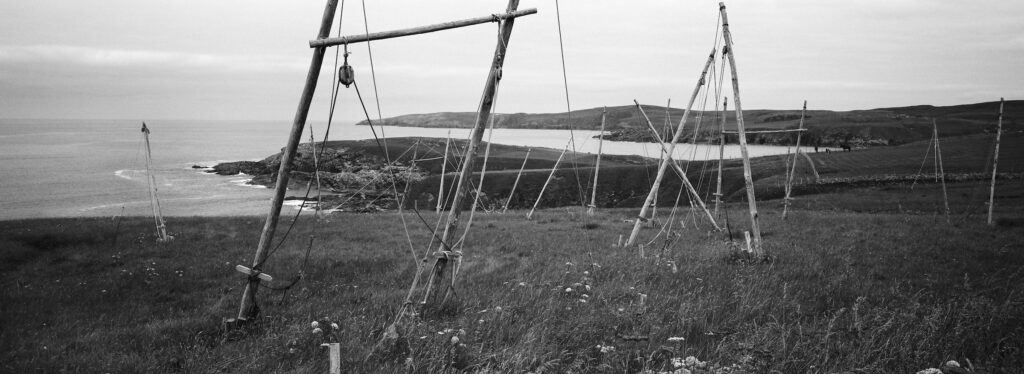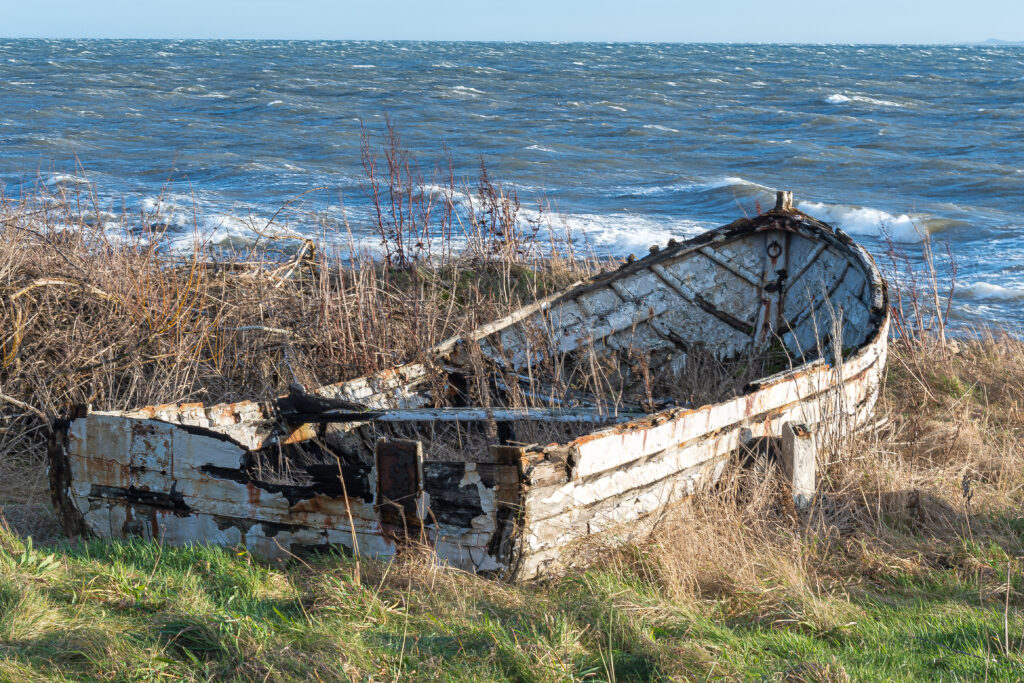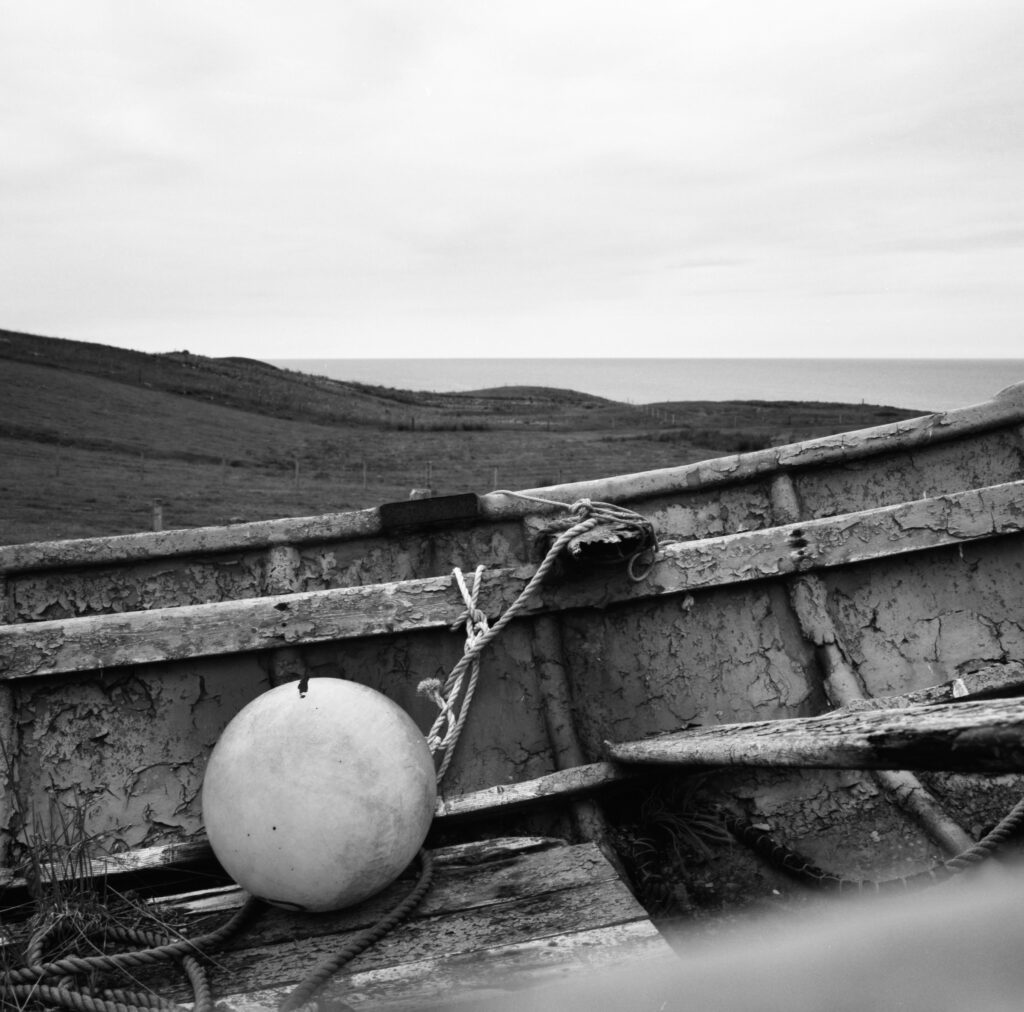Salmon Cobles at Boddin ©Colin McPherson
The Ending of the Salmon Netting Industry
There are a number of factors which led to the decline and final demise of the commercial salmon netting industry: but to put it simply the netsmen lost the battle with their various competitors to exploit a diminishing resource.
The distortion of the traditional market for salmon by the introduction of large numbers of farmed salmon into this market was also a blow to the netsmen.
The Resource
The resource, the number of fish being caught by both the nets and the rods was clearly falling from the late 1970s. Many reasons are given for this: the growth of salmon fishing off Greenland and the Faroe Islands, drift netting in Ireland and Northumbria, genetic confusion as escaped farmed fish interbred with wild fish, a drop in sand eel numbers, pollution of rivers from farm runoffs but it seems the best reason, though largely unexplained is “increased oceanic mortality” . In other words, fewer fish were returning from the ocean.

The Competitors
The two main competitors to the netsmen for this diminishing resource were seals and river anglers.
In 1914, when the Grey Seals Protection Act was passed it was claimed that there were only about 500 grey seals around Britain: by 1992 it was estimated that there were in excess of 100,00 grey seals around the coast. These creatures were consuming around a quarter of a million tons of fish per year, a percentage of it salmon. The large scale management , or culling, of seals was abandoned in Britain from the 1960s
Salmon netsmen were legally allowed to shoot seals in protection of their nets . However the BBC Scotland film “Fish or Foe” (available on Amazon) shows how it became very difficult for the fishermen to control seal numbers, in the face of pressure from the conservation lobby.
It was argued that the number of fish available to be taken by sports anglers in rivers was affected by the coastal and estuarine nets. It was also argued that a salmon taken by a rod was more valuable to the Scottish economy than one taken in a net. Angling is a massively popular sport and although casting for salmon is beyond the financial reach of many, the rod interest enjoyed wide support across the country.

Fish Farming
Wild salmon was a luxury food commanding a high price. It was a scarce seasonal resource with a price governed to an extent by the law of supply and demand. Expensive at the start of the season when there were few fish to be caught, cheaper during the high season grilse run, but always a costly food stuff. The introduction and growth of the salmon farming industry changed all of this completely. This product, available in large quantities all the year round, a supermarket staple at an affordable price had an impact on the market value of wild salmon. Rather than keeping up with inflation, the value of the wild catch stood still as wages, fuel and other costs all rose.
The Politics
Although written before the government ban, Iain Robertson’s book “The Salmon Fishers” is the most scholarly account of what has led to the decline and demise of commercial salmon netting. It is interesting to read of the long struggle between the nets and the rods, sometimes going back into the 1800s. Iain shows that for many years the nets were more profitable and thus more valuable to the landowning class than were the rods. That group was for very many years well represented in the House of Commons and more so in the Lords
The decline in the political power of the landowning class in Britain has made the netting industry more vulnerable to pressure from the well organised and well-funded angling interest. The equally well organised, well-funded and vocal conservationist lobby has also identified commercial netting as a threat to a species whose numbers are in serious decline.
The End
A total salmon netting ban was imposed in 2016 and in 2019 the ban was extended indefinitely by the Scottish Government. This was after a successful case was made by the angling lobby that netting, which catches salmon in open water as it makes its way to breeding grounds upstream, was responsible for depleting valuable river stocks.

Colin Macpherson’s evocative photographs and videos wonderfully illustrate the end of the fishing. His images of abandoned boats and now derelict netting stations around the coastline of Scotland clearly portray feelings of sadness and loss: generations of life and work slipping into the past.
Mike Smylie’s book “Voices from the Shoreline” is a survey of what he calls “The Ancient and Ingenious Traditions of Coastal Fishing:” He sympathetically illuminates by use of vivid description and interview what in some places is the passing of fishing methods and livelihoods and in other places is the determination of the fishers to hold on to their traditional ways. Mike also points the finger at some of those he feels are responsible for killing off these traditional fisheries.

